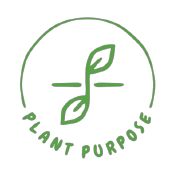Introduction: Imagine a world where a single plant has the potential to address numerous global challenges, from improving health and well-being to promoting environmental sustainability. This remarkable plant is Cannabis sativa L, and its multifaceted contributions to society are becoming increasingly recognized as a powerful tool for achieving the United Nations’ 17 Sustainable Development Goals (SDGs). My journey into understanding the pivotal role of Cannabis in achieving these goals began when I had the privilege of meeting Czech hemp activist Hana Gabrielova, who organized a groundbreaking conference in Vienna on Cannabis and the SDGs. The insights gained from this conference opened my eyes to the transformative potential of Cannabis in shaping a healthier and more sustainable future.
Cannabis and the SDGs: Cannabis sativa L, often referred to as hemp, is a versatile plant with a rich history dating back thousands of years. It is renowned for its myriad of applications, including medicinal, industrial, and environmental uses. Interestingly, this plant can contribute to addressing 14 out of the 17 Sustainable Development Goals, making it a potent catalyst for positive change.
- No Poverty: Cannabis cultivation and processing can provide income opportunities for marginalized communities, helping to reduce poverty and promote economic development.
- Zero Hunger: Hemp seeds are a nutritious source of protein and essential fatty acids, offering a sustainable solution to combat hunger and malnutrition.
- Good Health and Well-being: Cannabis-derived compounds, such as CBD, have shown promise in treating various health conditions, including pain management, anxiety, and epilepsy.
- Quality Education: The hemp industry fosters educational opportunities, from research on sustainable farming practices to the development of innovative hemp-based products.
- Gender Equality: The hemp sector is known for its inclusivity, offering equal opportunities for both men and women in cultivation, processing, and leadership roles.
- Clean Water and Sanitation: Hemp cultivation requires less water compared to many other crops, making it an environmentally friendly choice that aligns with water conservation goals.
- Affordable and Clean Energy: Hemp biomass can be used to produce biofuels and biogas, contributing to the development of clean and renewable energy sources.
- Decent Work and Economic Growth: The hemp industry has the potential to create jobs and stimulate economic growth in both developed and developing nations.
- Industry, Innovation, and Infrastructure: Hemp’s versatility inspires innovation in sustainable products, from textiles and building materials to biodegradable plastics.
- Reduced Inequality: By providing economic opportunities and promoting sustainable practices, Cannabis can help reduce inequality within and between nations.
- Sustainable Cities and Communities: Hemp-based construction materials and sustainable farming practices can contribute to building eco-friendly urban environments.
- Responsible Consumption and Production: Hemp is an eco-friendly alternative to conventional materials, promoting responsible consumption and reducing waste.
- Climate Action: Cannabis cultivation can sequester carbon, while hemp-based products can replace carbon-intensive materials.
- Life Below Water: Hemp bioplastics can reduce the pollution of oceans and marine ecosystems by replacing traditional plastics.
- Life on Land: Cannabis cultivation can help combat deforestation and promote reforestation efforts.
- Peace, Justice, and Strong Institutions: Efforts to decriminalize and regulate Cannabis can reduce the strain on legal systems and promote justice reform.
- Partnerships for the Goals: Collaboration between governments, NGOs, and the private sector is essential to unlock the full potential of Cannabis in achieving the SDGs.
Conclusion: Cannabis sativa L is not just a plant; it is a potential game-changer in our quest to achieve the 17 Sustainable Development Goals. By harnessing its diverse applications in medicine, industry, and environmental sustainability, we can pave the way for a brighter and more sustainable future. As we move forward, it is crucial to foster partnerships, advocate for responsible policies, and continue research and innovation in the Cannabis sector to fully leverage its potential as a catalyst for positive global change. The path to a more prosperous and sustainable world may just be growing right before our eyes, in the form of Cannabis sativa L.
Little surprise:
I had the chance to meet up with co-author Farid Ghehiouèche in Paris, who shared some highly interesting personal perspectives on this plant matter. Farid’s insights shed even more light on the potential of Cannabis sativa L. and its impact on sustainable development.
For Further Exploration:
If you’re eager to delve deeper into the intricate relationship between Cannabis sativa L. and the Sustainable Development Goals, there are valuable resources available:
For comprehensive and up-to-date information on the intersection of Cannabis and the SDGs, visit Cannabis2030.org. This platform offers a wealth of knowledge, research findings, and insights into the various ways Cannabis is contributing to a sustainable future.
- FAAAT’s Cannabis & SDGs Report:For an in-depth examination of this subject matter, consider exploring the report titled “FAAAT – Cannabis and the SDGs: Paving the way for the next decade.” This thought-provoking document, authored by the Thinktank FAAT, can be accessed at FAAAT-CANNABIS-SDG-REPORT-2019. It offers a detailed analysis of how Cannabis aligns with and supports various Sustainable Development Goals, providing valuable insights into its potential impact.


